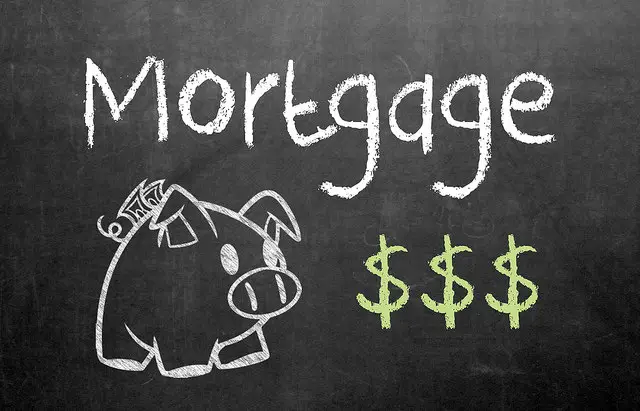Even though the speed of inflation has reduced during the last two years from a prime of 9%, many shoppers are nonetheless frightened about emerging costs. That is very true for retirees, who don’t have the opportunity to make more cash and offset an higher price of residing.
However how a lot does inflation in fact have an effect on retirees? Is it higher to have prime inflation previous or later in retirement? And, most significantly, what can retirees do to verify they don’t run out of cash as they face emerging costs?
I will be able to solution all of those questions and extra as I discover the have an effect on of inflation on retirees. I plan on doing this via examining 3 hypothetical eventualities: prime inflation early in retirement, prime inflation within the center of retirement, and prime inflation later in retirement. Through figuring out how inflation affects spending over the retirement lifecycle, you’ll be higher ready to handle emerging prices in outdated age.
So, whether or not you’re already retired or nonetheless within the making plans phases, it’s crucial to imagine the position inflation can play to your golden years. To that finish, let’s get started via having a look at what prime inflation in fact manner.
How Top is “Top” Inflation?
Earlier than we analyze how inflation affects spending in retirement, we first will have to make a choice a duration of “prime” inflation. Beneath is a chart appearing the once a year inflation charge within the U.S. from 1927 to April 2024:
Over this period of time, the once a year inflation charge within the U.S. was once between 0% and 5% round 66% of the time. The opposite one 3rd of the time, inflation was once above 5% or under 0% (i.e. deflation). Whilst there’s no reputable definition of “prime” inflation, I might say anything else above 10% obviously qualifies. Taking a look on the chart above, there are most effective two classes that meet this standards: the mid-Forties and the mid-Nineteen Seventies.
Once I analyzed those two classes to take a look at the have an effect on of inflation all over the early, center, and later portions of a 30-year retirement, I discovered that the mid-Nineteen Seventies have been a more sensible choice. Why? As a result of those who reached the later degree of retirement within the mid-Forties needed to retire within the mid-Twenties and face The Nice Despair.
Sadly, this once-in-a-century match biases the consequences way over the inflationary duration of the mid-Forties ever may. Consequently, if we wish a relatively cleaner comparability of prime inflation around the retirement lifecycle, we’ve got to select the mid-Nineteen Seventies.
Consequently, I selected 1974 as my “early” inflation retirement date, 1964 as my “center” inflation retirement date, and 1954 as my “past due” inflation retirement date. In doing so, I ensured that each one of those retirements skilled the very same prime inflation of the mid-Nineteen Seventies to early Eighties, however at other issues within the retirement cycle.
The ones retiring in 1974 skilled this inflation of their first 10 years of retirement. The ones retiring in 1964 skilled it of their 2d 10 years. And the ones retiring in 1954 skilled it of their ultimate 10 years.
After doing this, we will be able to then resolve whether or not experiencing inflation previous or later is healthier for the standard retiree. Let’s flip to that now.
How Does Inflation Affect Spending Throughout Retirement?
Now that we have got outlined our duration of prime inflation to investigate, let’s take a look at how this inflationary duration impacted spending for a regular retiree. To do that, I believed that each one retirees began with a $1 million portfolio and applied the 4% Rule.
As a reminder, the 4% Rule states that you just spend 4% of your portfolio price within the first yr and regulate this spending quantity for inflation once a year thereafter. On this case, whether or not anyone retired Early (1974) or Overdue (1954), they each get started their retirements spending $40,000 a yr and regulate in line with inflation over the years. Notice that whilst in retirement, their cash is invested in a 60/40 U.S. Inventory/Bond portfolio and is rebalanced once a year.
Plotting the once a year retirement spending all over those 3 classes [“Early (1974)”, “Middle (1964)”, “Late (1954)”] along a low inflation regulate duration [“Low (1990)”], we’d see the next:
As you’ll be able to see, what issues essentially the most in relation to spending in retirement is the general inflation skilled over retirement. It’s now not only one inflationary duration that issues, however the cumulative have an effect on of inflation that results your spending.
This explains why the “Early” line rises first, adopted via the Heart, then Overdue line. As each and every retirement window stories the duration of best possible inflation (1974-1984), the once a year spending rises accordingly. The only exception to that is the “Low (1990)” retirement duration which was once a 30-year duration of decrease general inflation (1990-2020).
What this implies is that you just don’t wish to concern a few spike in inflation, however sustained inflation over lengthy classes of time. This steady inflation can have a a long way larger have an effect on in your general spending.
However, spending by myself doesn’t let you know whether or not you’ll have a troublesome retirement. In the end, in case your portfolio rises sufficient, it might probably offset upper costs. So, how does inflation have an effect on your general portfolio in retirement? Let’s see.
How Does Inflation Affect Your Portfolio in Retirement?
Now that we’ve checked out spending in retirement throughout other inflation regimes, let’s see how your portfolio would’ve have fared underneath each and every state of affairs. Beneath I’ve plotted the portfolio price throughout our 3 retirement classes of passion [“Early (1974)”, “Middle (1964)”, “Late (1954)”] and the low inflation regulate duration [“Low (1990)”] the usage of a 4% withdrawal charge:
With a 4% withdrawal charge, a 60/40 portfolio would now not run out of cash throughout any of the retirement classes indexed above. Alternatively, the overall results do range broadly.
However what’s the purpose of those variations? Now not inflation. It’s marketplace efficiency. Sure, you learn that appropriately. Whilst inflation may have a unfavorable have an effect on in your retirement, the marketplace’s general efficiency issues extra.
We will see this within the symbol above since each the “Early (1974)” and “Overdue (1954)” inflationary classes ended up with extra money than the low inflationary duration of 1990-2020. This implies that marketplace efficiency can greater than offset the results of prime inflation.
You’ll see this obviously for those who take a look at the “Early (1974)” duration which began off at the back of, however then skilled the best 20-year duration in U.S. inventory marketplace historical past (1980-2000). Through getting into into the DotCom bubble all over its remaining 10 years of retirement, a 1974 retiree would’ve ended up with way more cash than the others. In a similar fashion, although the “Low (1990)” duration skilled much less inflation than the opposite classes, it additionally skilled one of the vital worst 10-year classes in U.S. inventory marketplace historical past from 2000-2010.
Striking this altogether and you’ll be able to see why good fortune performs such the most important position to your lifetime monetary results. Alternatively, there may be one variable to your regulate that may affect your “good fortune” in retirement—how much cash you spend.
For instance, believe we ran the similar retirement simulations as ahead of, then again, this time we used a 6% withdrawal charge as an alternative of a 4% withdrawal charge. Which means that our retirees would get started out spending $60,000 in step with yr and regulate it for inflation, as an alternative of beginning out spending $40,000 a yr. Total, general retirement spending could be 50% upper with a 6% withdrawal charge in comparison to a 4% withdrawal charge.
If we have been to try this, what would occur? Would our “Early (1974)” retiree nonetheless finally end up with essentially the most cash when the usage of a 6% withdrawal charge? Nope. In truth, anyone retiring in 1974 whilst retreating 6% once a year would cross broke in underneath 30 years.
To peer this, we will be able to plot the similar 4 retirement simulations, except for whilst the usage of a 6% withdrawal charge:
On this state of affairs the “Early (1974)” and “Heart (1964)” eventualities each run out of cash all over the remaining 10 years of retirement. How is that this conceivable? For the reason that timing of your spending in retirement issues.
So for those who spend an excessive amount of of your portfolio too early, it will input right into a monetary demise spiral that it’s going to by no means get away from. That is what took place with the Early and Heart eventualities above. The Heart state of affairs already struggled (relative to the opposite eventualities) with a 4% withdrawal charge. Alternatively, once we build up the withdrawal charge to six%, the brutal inventory marketplace of 1966-1982 prevents the portfolio from staying afloat. Lengthy tale quick, you get the monetary demise spiral.
The similar factor occurs differently for the Early (1974) state of affairs. As it spends such a lot cash early on, even if it begins to earn improbable returns within the Nineties, it’s too past due. The spending overtakes the source of revenue generated via the portfolio and it is going to 0.
Whilst those prime inflation eventualities may appear frightening for someone drawing near retirement, there is a simple technique to combat again.
Battle Again Towards Top Inflation
Whilst we will be able to’t regulate how a lot issues will price someday, when you are scuffling with towards inflation, there may be one instrument at all times at your disposal—how much cash you spend. In contrast to the retirement eventualities above, you’ll be able to regulate your spending over the years.
Up to I really like working retirement eventualities the usage of the 4% Rule, that is the place they fall quick. The 4% Rule assumes that retirees are robots who indiscriminately expanding their spending with inflation each and every yr. Sadly, all of the empirical proof means that this isn’t how retirees behave. If anything else, retirement spending has a tendency to cross down over the years, now not up. As I mentioned in Simply Stay Purchasing:
Researchers on the Middle for Retirement Analysis demonstrated…that spending in retirement usually declined via about 1% in step with yr.
If that is so, then inflation is also much less of a concern than you first of all imagined.
However although you don’t lower your spending over the years, there’s not anything preventing you from adjusting your spending when vital. As I’ve proven in the past, you’ll be able to spend extra money in retirement if you might be versatile. The trick is not to withdraw as a lot out of your portfolio when its in a big decline. In different phrases, don’t kick your investments whilst they’re down.
If you’ll be able to embody this concept, then you definitely don’t wish to concern as a lot about working out of cash in retirement. That is very true for those who revel in a duration of prime inflation. In the end, the easiest way to combat again towards upper costs isn’t to pay them! Whilst that is more straightforward mentioned than executed, a bit of flexibility to your spending can cross some distance in retirement.
Fortunately, for present or soon-to-be retirees our most up-to-date episode of prime inflation appears to be over. Till the following one, satisfied making an investment and thanks for studying!
For those who favored this submit, imagine signing up for my publication.
That is submit 405. Any code I’ve associated with this submit can also be discovered right here with the similar numbering: https://github.com/nmaggiulli/of-dollars-and-data













